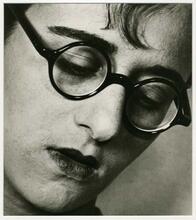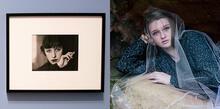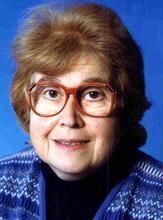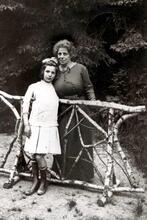Marianne Breslauer
Engaging in art, and particularly in painting, was a matter of course in the liberal Prussian parental home in Berlin into which Marianne Breslauer was born in 1909. From 1927 to 1929 Breslauer studied at the Lette-Verein, the first school for women photographers. Breslauer went to Paris to study and developed her style of quiet, poetic street scenes, which she was able to sell to illustrated magazines upon her return to Berlin at the beginning of 1930. The numerous photographs she brought back from her two-month trip to Palestine in 1931 were published in such periodicals as Die Dame, Der Querschnitt and the Frankfurter Illustrierte. In 1932 she became a freelancer. Breslauer was awarded the Hann Höch Prize in Berlin in 1999.
Family and Education
Engaging in art, and particularly in painting, was a matter of course in the liberal Prussian parental home in Berlin into which Marianne Breslauer was born on November 20, 1909. Her father, Professor Alfred Breslauer (1866–1954), was an architect, married to Dorothea (née Lessing).
In 1926, after completing middle school and spending some time in Switzerland, Breslauer worked for a few weeks in the studio of photographer Lisi Jessen, a family friend, in order to familiarize herself with this medium. An exhibition of the works of Berlin portrait photographer Frieda G. Riess in the Flechtheim Gallery had influenced her decision to become a photographer. From 1927 to 1929 she studied at the Lette-Verein, the first school for women photographers, founded in 1890, completing her studies with a fellowship examination at the Berlin Chamber of Arts and Crafts (Handwerkskammer). Her family’s comfortable situation enabled her to fulfill her dream of going to Paris to study, for a short time also as a pupil of Man Ray. Paris was at this time the capital of the avant-garde and many ambitious young women landed in the studio of Man Ray, who reigned over the sphere of photography. During her walks in the city she developed her style of quiet, poetic street scenes, which she was able to sell one at a time to illustrated magazines upon her return to Berlin at the beginning of 1930.
Photography Career
These photographs led to a position at the Ullstein Photography Studio, technically the most advanced of its time, as photo editor and photojournalist under Elisabeth Heddenhausen in the largest German publishing house of illustrated works.
Marianne Breslauer was commissioned to do photo reporting on everyday Berlin themes, as well as taking advertising photographs and portraits in the studio. The numerous photographs she brought back from her two-month trip to Palestine in 1931 were published in such periodicals as Die Dame, Der Querschnitt and the Frankfurter Illustrierte. In 1932, after two years at the Ullstein Studio, she became a freelancer, working for the Mauritius Agency and returning to Paris once again. Here Pablo Picasso and Ambroise Villard were among those she photographed for Mauritius. In the spring of 1933, commissioned by the Academic Agency, she traveled to northern Spain with the Swiss writer and photographer Annemarie Schwarzenbach. On returning to National Socialist Germany she was unable to publish under her own name. Schwarzenbach obtained commissions for her from Swiss newspapers and in 1934, under the pseudonym “Ipp,” from the Kind Agency and the Deutscher Kunstverlag.
Marriage and Art Dealership
In 1936, together with the art dealer Walter Feilchenfeldt, Marianne Breslauer emigrated to Amsterdam, where they married and where he attempted to work at his profession. In 1937 she gave up photography and joined her husband in dealing in art. In 1939, after the birth of their first son Walter (a second son, Konrad, was born in 1944), the couple moved to Zürich where they founded the Feilchenfeldt Art Gallery, specializing in nineteenth-century French paintings and drawings. After her husband’s death in 1953, Marianne Feilchenfeldt ran the business by herself, continuing to work in Zürich, where she died on February 7, 2001.
Although Marianne Breslauer worked as a photographer for only ten years of her life, she left behind an interesting oeuvre, for which she was awarded the Hann Höch Prize in Berlin in 1999.
Solo Exhibitions
Photographs 1927–1934. Kunsthaus Zürich: 1982.
Photographs 1927–1937. Das Verborgene Museum, Berlin: 1987.
Photographs 1927–1937. (Neue) Nationalgalerie Berlin: 1989.
Exhibition at the Museum Ephraim Palais of the Stiftung Stadtmuseum, Berlin: 1999.
Breslauer, Marianne. Photographic Retrospective 2. Bielefeld, Düsseldorf: 1979.
Idem. “Photographs 1927–1937.” Sonderdruck brennpunkt-Magazin 4 (1987). Berlin: 1987.
Idem. Photographs 1927–1937. Exhibition catalog. Berlin: 1989.Marianne Breslauer. Photographien 1927–1936.
Lexikon Jüdische Frauen. Edited by Jutta Dick and Marina Sassenberg.










